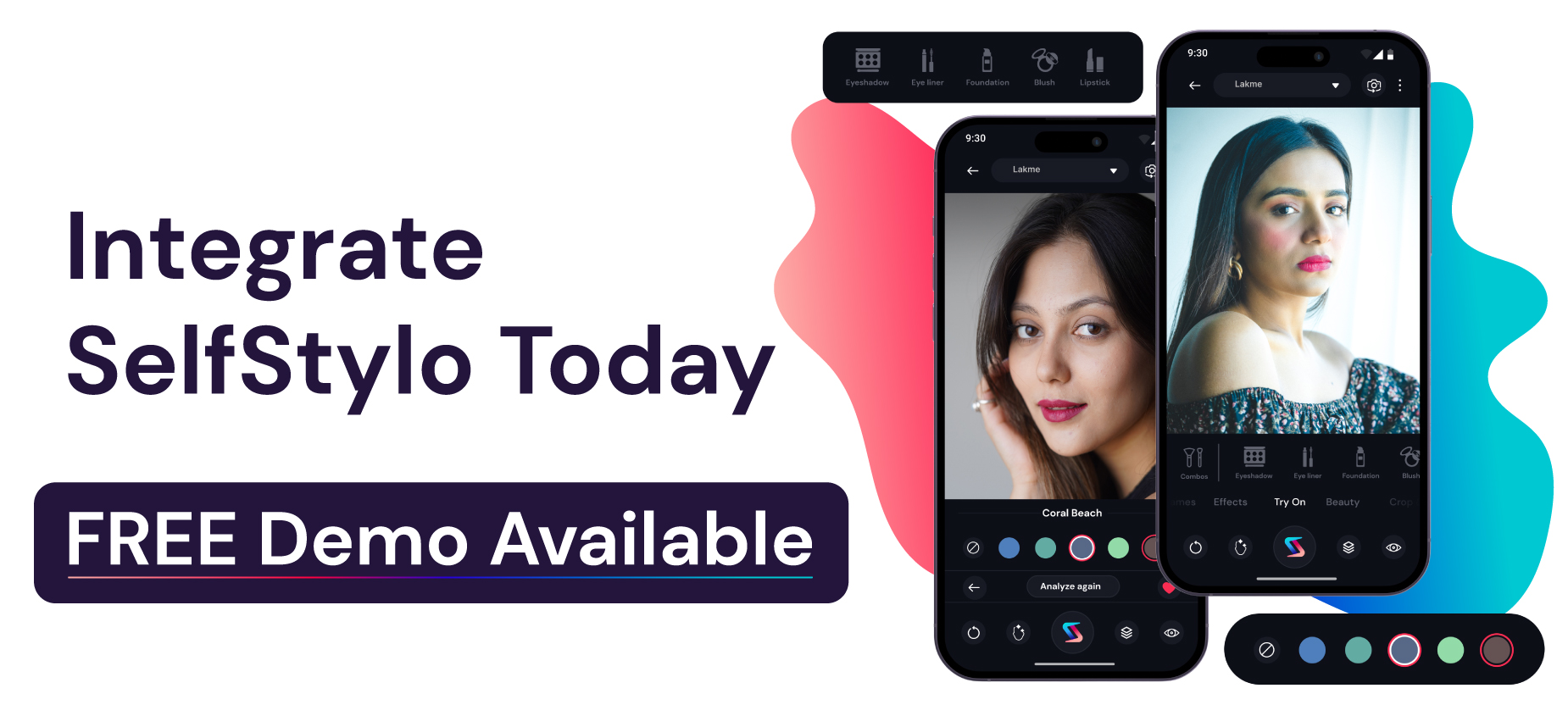AR in shopping allows customers to interact better, customize, and engage with online products. This guide will help you understand why AR is beneficial for your brand and how it boosts sales.
Picture this: you add new products to your eCommerce store, and the next day, you wake up to record sales conversion on your retail portal. Your customers are 30% more engaged and satisfied with their purchase, whereas your business gains improved brand value, customer trust, and enhanced ROI.
Yes, it is possible with the new business technology — augmented reality. However, it’s vital to understand how to use AR solutions in retail marketing and the AR shopping trends in 2023.
What Is AR In Shopping?
To many people, augmented reality shopping seems like futuristic sci-fi. But in reality, many business owners are leveraging the benefits of AR to sell products.

That said, the augmented reality market is growing fast. A survey by McKinsey&Company indicated that 48% of respondents are interested in using Metaverse technology (a blend of AR and VR) for shopping in the next five years. In fact, 38% of brands said that they had adopted AR in 2022.
But before you plan to invest in the technology, you’ll need to understand what AR in shopping is. The advanced tech allows customers to try and test products in the virtual world through smartphones.
Augmented reality helps them understand how products will look in their houses or, in the case of cosmetics, on their faces. As such, mobile AR helps shoppers engage in pre-buying behavior, like virtually trying makeup to gauge how it looks on their faces and make a good purchase decision.
AR Uses For Shopping
Some best use cases of AR in shopping for leading eCommerce brands include:
Product Visualization
AR retail apps enable potential customers to view the product online. The 3D product model allows users to analyze the size and shape of the product before purchasing. Often, high product return rates are due to the inability of the customers to view products within their settings. Virtual try-on tool eradicates the confusion of buying the wrong items, helping shoppers make satisfied purchase decisions.
AR For Marketing & Promotion
The most straightforward yet most effective marketing technique in the digital world is implementing AR. It is an innovative technology that helps brands connect their business catalog with the mobile experience. AR-powered solutions offer interactive and immersive shopping experiences that help extend brand reach. Fun features of the virtual try-on tool or app help business owners leverage digital channels to drive sales.
Brand Awareness & Loyalty
Customers are willing to adapt the technology while shopping. So, retailers need to create a personalized experience to meet customer expectations. Integrating augmented reality apps makes shopping easy for customers. When they get the right product after an immersive experience of AR, they’re likely to return for more. AR can also assist brands in formulating loyalty campaigns. The real-time data analytics gathered by the tool help understand customer journeys and give them personalized services.
If you’re a beauty brand wanting to offer an engaging shopping experience to your customers, integrate SelfStylo AR today. The adopters of AR tools get the advantage of connecting with customers at a deep level and driving better revenue.
Augmented Reality Shopping Trends For 2023
Now that you know the AR use cases and benefits of augmented reality, it’s time to check the AR trends in 2023.
Social Media App Filter
The pandemic and busy lifestyle of people have pushed them to spend more time online. As a result, retail stores have had to experiment with new tech to offer an enjoyable shopping experience to customers. According to Deloitte, the trend is not going away anytime soon as all smartphone users and 75% of the global population will be frequent AR users. Therefore, brands that want to stay ahead must invest in creating AR filters to improve customer experience.
Virtual Try-On
As the most obvious use of AR is helping customers view and try products, this is another major trend that will keep shaping the online business world. Brands can create AR filters for Instagram and Snapchat that enable users to try different products. Sephora’s lipstick try-on Instagram is the best example of a virtual try-on tool. Customers could use the try-on feature to analyze how the product will look on them and make purchases.
AR Mirrors For In-Store Shopping
In the retail space, we can expect eCommerce to offer an in-store AR experience to the customers. The augmented reality technology adopters can install AR mirrors. The motion-sensor technology and digital screen combination superimpose images onto the mirror in real-time. Customers can stand in front of a mirror and try products like clothing.
AR usage is increasing among leading eCommerce brands as it makes the customer experience fun and interactive. Hence, we can expect growth in the number of brands leveraging augmented reality in 2023 and beyond.
Implement AR Apps In Your Brand
Retailers are using augmented reality solutions to connect and engage a broader audience market, as they believe that AR can improve the brand-customer relationship.
If you’re still apprehensive about what AR offers and how the new tech bridges the gap between online and offline shopping experiences, get in touch with SelfStylo experts.
Our AR experts can help you integrate AR in shopping for both online and offline purposes.



